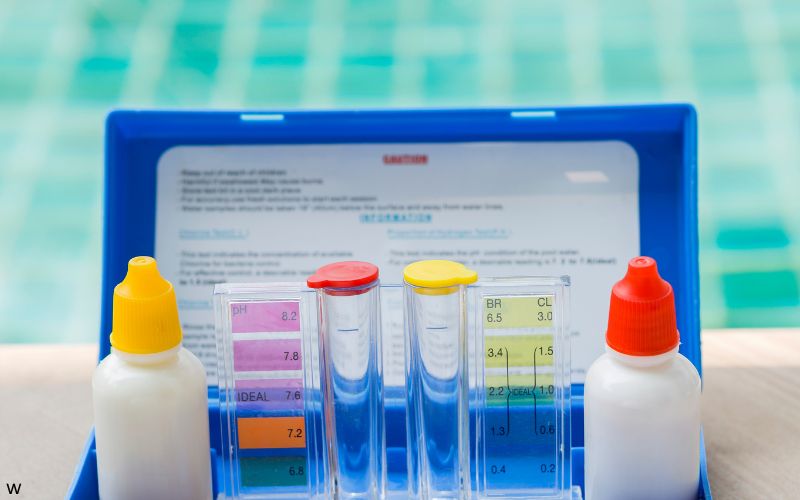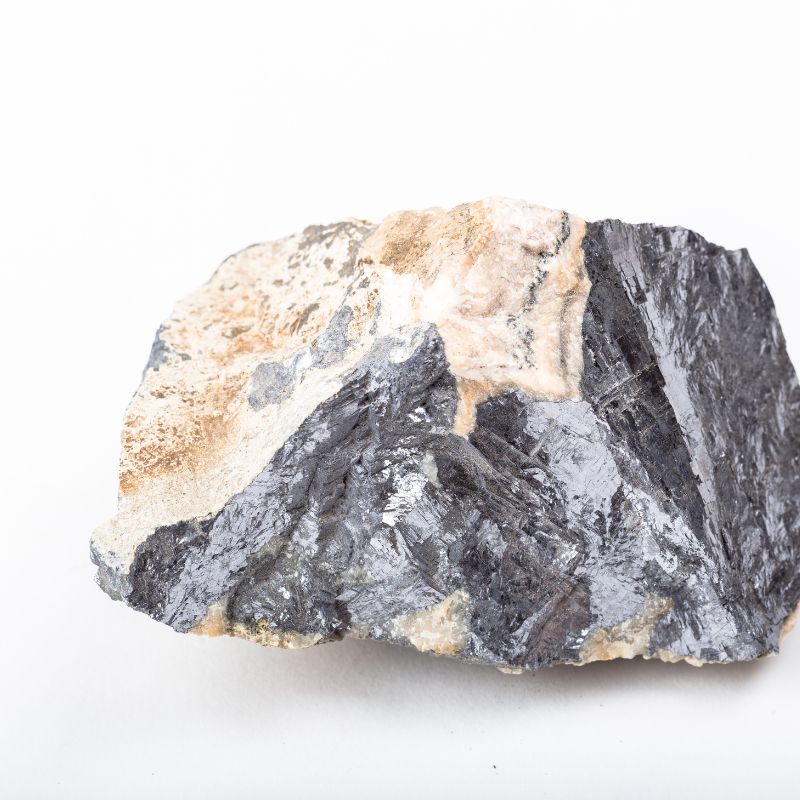Jackson Water Quality at a Glance
unsafe to drink
Is Jackson Water Safe to Drink?
NO – Ongoing Crisis – Jackson’s water system collapsed in August 2022, leaving 180,000 residents without safe drinking water for weeks. The system remains under federal oversight with chronic infrastructure failures, lead contamination, and widespread PFAS “forever chemicals.” Despite recent improvements, many residents continue to distrust the water due to hundreds of boil-water notices and ongoing violations of federal drinking water standards.
🚨 Critical Issues for Jackson Residents
- Infrastructure Collapse: System failure in August 2022 left 180,000 without water; 300+ boil-water notices issued 2020-2022
- Lead Contamination: 90th percentile at 8-16 ppb (EPA action level is 15 ppb); older homes at highest risk
- PFAS “Forever Chemicals”: 98% of Mississippi water samples contained PFAS; Jackson area significantly affected
- Chromium-6: Average 48.5 ppt detected – double the level with negligible cancer risk
- Disinfection Byproducts: High levels of haloacetic acids (54 ppb) and trihalomethanes (58 ppb) increasing cancer risk
- Environmental Justice: Decades of disinvestment in majority-Black city’s infrastructure
Read the full report below for detailed analysis, crisis timeline, and emergency recommendations for Jackson residents.
Jackson – Mississippi – Water Quality Report 2025: PFAS Testing, Infrastructure Concerns & Safety across your city
Jackson Water, operating as JXN Water under federal court-appointed management since November 2022, serves approximately 180,000 residents across Mississippi’s capital city and surrounding areas including Byram and portions of Hinds, Rankin, and Madison counties. The system encompasses over 1,500 miles of water distribution lines, two major treatment plants, and numerous pumping stations that deliver an average of 42 million gallons of drinking water daily across roughly 150 square miles of service territory.
Jackson sources its drinking water from the Ross Barnett Reservoir and the Pearl River, both surface water sources treated at the O.B. Curtis Water Treatment Plant and J.H. Fewell Water Treatment Plant respectively. Following decades of infrastructure challenges and compliance issues culminating in a system collapse in August 2022, the utility now operates under federal oversight with interim third-party manager Ted Henifin leading comprehensive system rehabilitation efforts. JXN Water has implemented significant improvements in treatment operations, distribution system repairs, and regulatory compliance while working toward long-term stability and sustainable water service for Mississippi’s largest metropolitan area.

Jackson Water Quality: Current Status (2024-2025)
Latest Testing Results
- Lead and Copper Monitoring: Jackson remains out of compliance with EPA Lead and Copper Rule requirements since 2020, with ongoing “Failure to Install Corrosion Control Treatment” violations requiring Mississippi State Department of Health-approved improvements at both treatment plants.
- System Violations: The water system continues to receive “Failure to Meet Water Quality Parameters” violations since 2018 and “Failure to Install Corrosion Control Treatment” violations since 2020. Recent 2024 testing shows exceedances in disinfection byproducts on both surface water and well water systems.
- Boil Water Notices: Significant improvement with only two citywide boil water notices since February 2023 lasting a combined two days, though 184 precautionary alerts were issued in Q2 2024, including localized notices affecting smaller areas during repairs.
Water Sources
- Ross Barnett Reservoir: Primary source providing treated water through the O.B. Curtis Water Treatment Plant, serving the majority of Jackson’s water supply needs after major rehabilitation following the 2022 crisis.
- Pearl River: Secondary source processed at the J.H. Fewell Water Treatment Plant, constructed over a century ago. Plans exist to potentially retire this facility once distribution losses are reduced to target levels of 25 million gallons per day.
- Groundwater Wells: Two backup groundwater wells including the Maddox Road system provide additional supply security during high demand periods or when surface water treatment plants require maintenance.
Treatment Operations Management
- Jacobs Solutions Partnership: Since February 2023, Jacobs operates both treatment plants under an initial short-term contract, followed by a 10-year agreement effective January 2025, providing professional management, staffing, and technical expertise to ensure reliable water production.
- O.B. Curtis Plant Improvements: Following the catastrophic failure in August 2022, membrane system production capacity was restored to over 20 million gallons per day through comprehensive repairs, optimization, and improved sedimentation basin operations.
- Workforce Development: Jacobs hired 47 licensed operators, mechanics, technicians, and support personnel to address critical understaffing issues that contributed to system failures, bringing compensation to industry standards.
Infrastructure Rehabilitation
- Distribution System Repairs: Through the Find and Fix Program, over 1,381 water line repairs have been completed with 571 additional projects under construction, reducing daily production needs from 58 to 42 million gallons (28% reduction year-over-year), saving approximately $3.7 million annually in production costs.
- Sewer System Progress: Completed repairs on nearly 300 sewer line failures, reducing the service request backlog from 2,200 to under 200 while preventing raw sewage releases into the environment.
- Federal Investment: Over $600 million in federal funding allocated for system improvements through the Consolidated Appropriation Act of 2023, with JXN Water spending $238 million to date on critical water and sewer infrastructure needs, including $54 million for Jacobs Solutions operations.
Regulatory Oversight and Community Engagement
Jackson’s water system operates under a federal court-ordered Interim Stipulated Order managed by interim third-party manager Ted Henifin, with oversight extending until at least 2027 under U.S. District Judge Henry Wingate. The EPA, Department of Justice, and Mississippi State Department of Health collaborate on compliance monitoring and improvement planning. Community organizations including the Mississippi Poor People’s Campaign and People’s Advocacy Institute gained formal intervention status in federal proceedings in March 2024, ensuring resident voices are heard in system management decisions. JXN Water provides customer assistance programs including SNAP-based discounts for low-income residents, though implementation has faced legal challenges regarding privacy protections currently under 5th Circuit Court of Appeals review. The utility’s commitment to transparency includes regular quarterly reports, public meetings, and ongoing communication about system improvements and water quality status.
Recommendations for Jackson Residents

Test Your Water
Contact the Mississippi State Department of Health for lead testing recommendations, especially for homes built before 1986. Given Jackson’s ongoing lead and copper compliance violations since 2020, private testing may provide additional peace of mind for concerned residents.

Monitor System Updates
Stay informed about boil water notices and system improvements through JXN Water’s website, quarterly reports, and 24-hour customer service line at 601-500-5200. Sign up for emergency alerts and follow local news for updates on infrastructure projects and service disruptions.

Consider Advanced Filtration
Given Jackson’s ongoing water quality challenges including lead violations and disinfection byproduct exceedances, homes may benefit from NSF-certified filters (Standards 53 and 58) designed to reduce lead, disinfection byproducts, and emerging contaminants like PFAS.

Report Issues and Stay Connected
Contact JXN Water customer service at 601-500-5200 for billing questions, service issues, or water quality concerns. The call center operates 24 hours a day, every day of the year. Participate in quarterly community meetings and public comment periods to ensure your voice is heard in system management decisions.

Understand Your Bill
Familiarize yourself with JXN Water’s rate structure implemented in 2024. Eligible SNAP recipients may qualify for discount programs, though enrollment processes are under federal court review. The utility faces financial challenges with federal operating funds depleting by April 2025, potentially leading to additional rate increases.
Frequently Asked Questions
Is Jackson’s tap water safe to drink?
Jackson’s water system has shown significant improvement since the August 2022 crisis under federal oversight and Jacobs’ management. While the EPA has determined that water from both treatment plants currently meets Safe Drinking Water Act standards for consumption, the system continues to face ongoing compliance challenges with lead and copper regulations and periodic disinfection byproduct exceedances.
Residents should stay informed about boil water notices and consider additional filtration for homes with older plumbing, especially those built before 1986. JXN Water and Jacobs Solutions have made substantial improvements to treatment operations since 2023, including restored production capacity, improved staffing with 47 new operators, and systematic infrastructure repairs. The utility publishes quarterly reports on system progress and water quality testing results available on their website at jxnwater.com.
Why have there been so many water problems in Jackson?
Jackson’s water infrastructure challenges stem from decades of deferred maintenance, aging equipment, and insufficient funding for system upgrades. The city’s water system includes over 1,500 miles of distribution lines, some over 100 years old, resulting in extensive water losses and frequent failures.
Major issues have included:
1. Treatment plant equipment failures and critical understaffing at facilities managing complex water treatment operations
2. Massive water losses due to deteriorating pipes and outdated distribution infrastructure, with previous production at 58 million gallons daily for actual demand of 25 million gallons
3. Persistent violations of federal Safe Drinking Water Act requirements since 2018, particularly for lead and copper control and water quality parameters
The current federal intervention aims to address these systemic problems through comprehensive infrastructure improvements, professional management, and sustained funding for long-term system stability.
What is being done about lead in Jackson’s water?
Jackson’s water system currently remains out of compliance with EPA Lead and Copper Rule requirements, with ongoing violations since 2020 for failure to install proper corrosion control treatment:
• Treatment improvements: JXN Water and Jacobs are working with industry experts on a Desktop Corrosion Control Study to implement proper corrosion control measures at both treatment plants
• Ongoing monitoring: Regular lead and copper sampling continues throughout the distribution system, with results reported to state and federal regulators and public notifications as required
• Infrastructure replacement: Systematic replacement of aging water lines through the Find and Fix Program helps reduce lead exposure risks from older plumbing materials
• Resident protection: Homes built before 1986 are at higher risk due to potential lead-containing plumbing components and service lines
The Mississippi State Department of Health recommends that residents flush cold water taps for 1-2 minutes before drinking, especially in older homes, and avoid using hot water for cooking or drinking.
How long will federal oversight continue?
Federal oversight of Jackson’s water system will continue until the court determines the system is stable, compliant, and financially sustainable:
Current Timeline:
• Interim third-party manager Ted Henifin is appointed until at least 2027 under federal court order by U.S. District Judge Henry Wingate
• Extension depends on achieving measurable progress in infrastructure stability, regulatory compliance, and financial sustainability
• Current federal operating funds are depleting with the $150 million flexible funding expected to run out by April 2025
Transition Planning:
• State legislation under consideration proposes transferring long-term control to a new utility authority rather than returning control to the city
• Community advocacy groups including Mississippi Poor People’s Campaign and People’s Advocacy Institute gained formal legal standing in March 2024 to participate in decisions about the system’s future
• Long-term sustainability requires completion of priority infrastructure projects, resolution of compliance violations, and establishment of sufficient revenue streams for ongoing operations
Quality News About Your Water
Get the comprehensive water quality news coverage you need with our dedicated US Water News Service. From coast to coast, we deliver in-depth reporting and expert analysis on PFAS contamination, EPA regulatory changes, infrastructure developments, and emerging water safety issues affecting communities nationwide. While mainstream media only covers the biggest stories, we provide the detailed, ongoing coverage that helps you understand the full scope of America’s water challenges. Whether you’re a concerned citizen, water professional, or community leader, our daily updates and analytical insights keep you informed about the issues that matter most to public health and environmental safety.
Contaminants of Concern

Lead and Copper
Source: Lead contamination typically originates from older plumbing systems, service lines, and fixtures installed before 1986, particularly when proper corrosion control treatment is not maintained in the distribution system
Health Effects: Long-term exposure to elevated levels may increase cancer risk and potentially affect liver, kidney, and central nervous system function
Current Levels: 2024 testing shows exceedances in haloacetic acids and trihalomethanes on both surface water and well water systems, with violations reported in multiple quarters EPA Limits: 60 ppb for haloacetic acids (HAA5) and 80 ppb for total trihalomethanes (TTHMs)

PFAS Compounds
Source: Per- and polyfluoroalkyl substances from industrial activities, military installations including Jackson Air National Guard Base, and consumer products that can persist in surface water sources and groundwater
Health Effects: Research indicates potential links to kidney cancer, liver damage, immune system impacts, thyroid dysfunction, reproductive health issues, and increased risk of ulcerative colitis
Current Status: Mississippi statewide testing reveals 98% of water samples contain PFAS, with Jackson area significantly affected. Military installations and industrial sources contribute to contamination EPA Limits: New 2024 regulations set maximum contaminant levels for PFOA and PFOS at 4 ppt each

Heavy Metals
Source: Arsenic occurs naturally in Mississippi groundwater, while chromium-6 contamination may result from industrial processes and aging infrastructure components
Health Effects: Arsenic is a known carcinogen causing skin, bladder, and lung cancers; chromium-6 exposure linked to respiratory and gastrointestinal health impacts
Current Levels: Testing shows arsenic presence in Jackson’s water supply within federal limits, with chromium-6 detected at levels averaging 48.5 parts per trillion, double the level with negligible cancer risk EPA Limits: Arsenic maximum contaminant level is 10 ppb; chromium-6 remains unregulated federally
Please read – our information
The information presented on cleanairandwater.net is compiled from official water quality reports, trusted news sources, government websites, and public health resources. While we strive for accuracy and thoroughness in our presentations, we are not scientists, engineers, or qualified water quality professionals.
Our mission is to present water quality information in an accessible, real-world format that helps people understand what’s in their water and make informed decisions about their health and safety. We believe that complex environmental information should be available to everyone in a format that’s easy to understand.
We make every effort to ensure our content is current and accurate, but we cannot guarantee that all information is complete or error-free. This website should not replace official communications from your local water utility or health department. We always recommend consulting official sources for the most up-to-date information regarding your specific water system.
Clean Air and Water is not liable for any unintentional errors, omissions, or outdated information. The content on this site is provided for informational purposes only and should not be considered professional advice.


